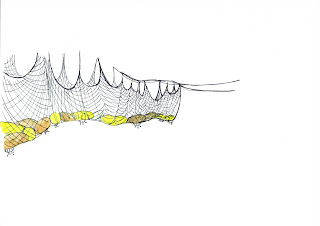I began reading into the theory of festival architecture through the following book:
http://reader.eblib.com.au.ezp01.library.qut.edu.au/(S(n05vfz5uhfyjfre4duzwqldi))/Reader.aspx?p=325392&o=96&u=cy%2btDP26vqH6yyPMoRTn6w%3d%3d&t=1352287204&h=A51166A57C444EB29F289E955E05B9A6E86D6B24&s=7167293&ut=245&pg=1&r=img&c=-1&pat=n#
Whilst im not going to regurgitate everything i read, there were some important ideas and historical discourses which i can see are still in existence today or which i think are important to reflect upon. Even concepts which are antiquated and seemingly irrelevant to modern society (or whatever 'post modern' society our future scenario might be deemed) are important to understand in a historical sense to give richness, cultural understanding and progression to new ideas.
(Page 23) Passive, static viewing dominates much of modern society. In contrast roman spectator-ship was highly interactive.
When passing through city they would read the individual elements as important components in meaningful narratives (Favro 1993).
This statement i find interesting when applied to my future scenario as i feel the interactive spectator-ship of past societies have the ability to be reignited with the help of technological developments. Though i am by no means hoping that fighting to the death in Colosseum arenas will be brought back into play, the ability to actively participate in festival events through virtual triggers is an exciting proposal.
There was much religious symbolism to many roman festivals which is often the key theme behind the above mentioned meaningful narratives. One example, a simple concept, is the choreography of processions to 'open up' to a heightened space before ending (in order to be closer to god). This simple idea can hold meaning to multiple religions or personal ideals and still holds potential to create a meaningful narration of the festival's spatial experience.
State festivals in Venice were also important occasions for classes to meet, if only to a certain degree, and a time when social barriers were lowered and everyone could praise the city's former greatness.
Carnival - combined history and myth, traditions and innovation, and represented an uninhibited moment that was open to all social classes in which roles were reversed and everything (almost) was allowed.
These are both interesting due to my original intent of political statement through the creation of an area where people from different cultural backgrounds can celebrate and learn about each others culture in a positive environment.
Finally, the link between land and water seems to be a reoccurring theme to many festivals. I believe for multiple reasons the Brisbane river should be better linked to the city and that a festival could provide the catalyst for this change.

.JPG)













.jpg)
.jpg)


